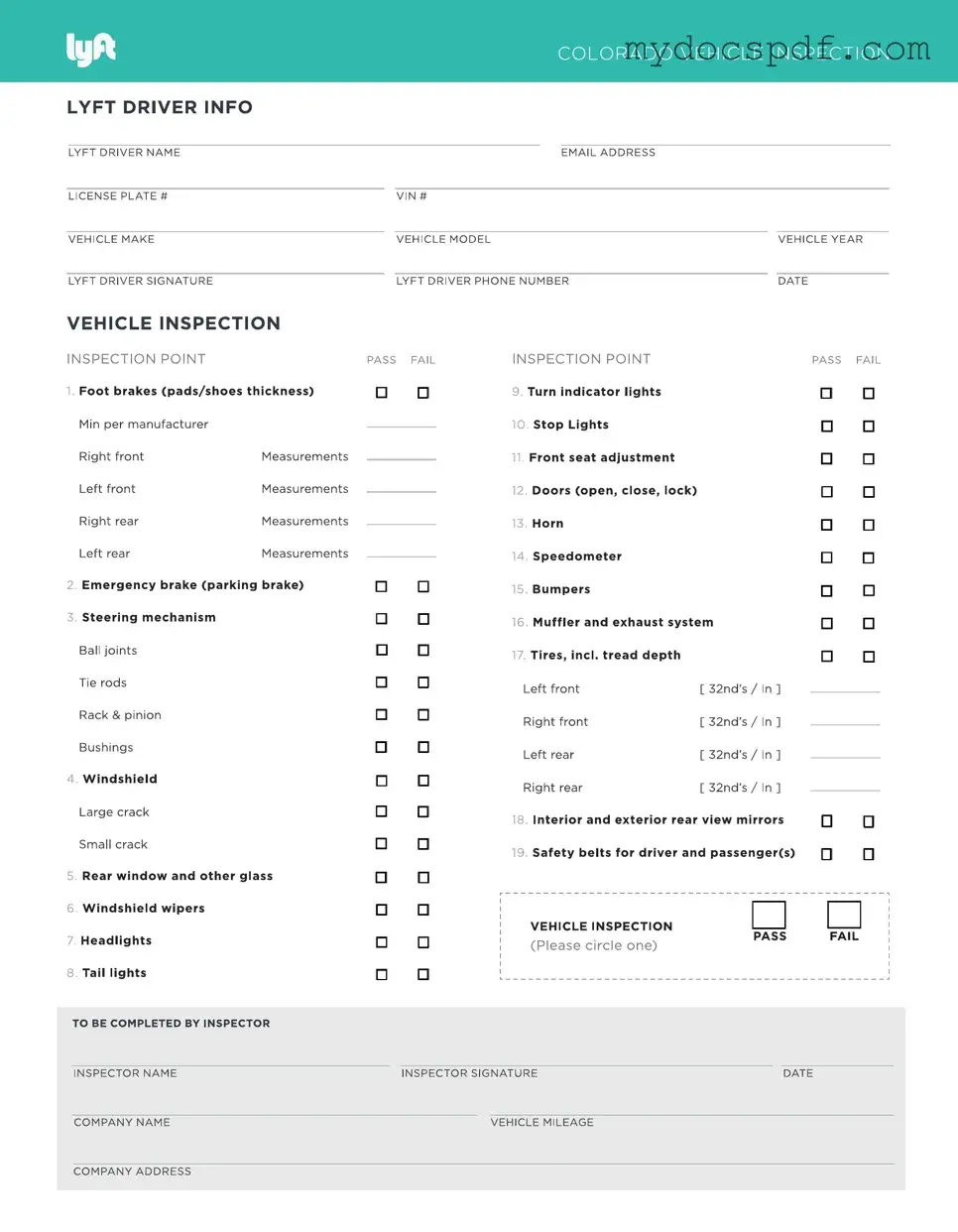For drivers partnering with Lyft, the inspection form serves as a crucial tool to ensure vehicle safety and compliance with company standards. This form outlines the necessary criteria that vehicles must meet before they can be used for rideshare services. Key aspects include a detailed checklist covering essential components such as brakes, lights, tires, and overall vehicle condition. Each section requires drivers to provide specific information, ensuring that all vehicles are not only roadworthy but also comfortable for passengers. Additionally, the form may require documentation of previous inspections and maintenance records, reinforcing the importance of regular upkeep. By adhering to these guidelines, drivers contribute to a safer rideshare experience for everyone involved. Understanding the inspection form is essential for maintaining high standards and compliance with Lyft's policies, fostering trust between drivers and passengers alike.

